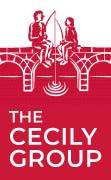The Challenges of Aligning Generations
You’ve probably heard the old saying: “From shirtsleeves to shirtsleeves in three generations.” It’s a warning about how wealth is often built by one generation, maintained by the next, and lost by the third. For many families, this story becomes a quiet fear. But it doesn’t have to be this way.
Some families thrive well into the third generation and beyond—not because they avoid challenges, but because they face them with purpose and structure.
Why Wealth Disappears Across Generations
Let’s look at the core issue: when wealth is passed down without a plan, it gets divided. Each time wealth is split between children, and then their children, the financial base shrinks. Over time, this can mean poorer investment opportunities, higher costs, and a loss of economic momentum.
But it’s not just about money—it’s about mindset. Families who operate from a place of fear often struggle to plan for the future. Parents may become overly protective, holding back opportunities from their children instead of preparing them to lead. Without experiences that build trust and skill, the next generation isn’t ready to carry the family forward.
Many advisors have become overly specialised, resulting in a diminished half-life of their mandates. Regulatory (and tax) changes have become more prevalent, leading to a continuous adaptation of structures. This leads to a constant flux of strategic and complex work that has to be handled by both the advisors and the family, leaving little headroom to address more strategic questions.
The Power of a Common Cause
One solution that helps families stay together—financially and emotionally—is a shared purpose. When everyone feels connected to something bigger than themselves, they’re more likely to stay engaged and supportive of one another.
This “common cause” could be a family business, a charitable foundation, or any goal that brings people together across different interests and talents. It offers a reason to collaborate, even after disagreements, and provides space for every family member to contribute in their own way.
But for this to work, the cause needs to be meaningful to everyone and supported with a clear plan.
What Can Go Wrong Without a Plan
In a family business, succession is often where things fall apart. For example, two siblings may want to continue running the company, while a third has different ambitions. If that third sibling is cut out or doesn’t feel represented in the plan, resentment can grow. Even if it’s done with good intentions, an unfair structure can damage family trust.
Philanthropy, too, can fall short when it’s not clearly defined or its outcome is poorly measured, if at all. Some families make donations without a long-term vision—what’s often called “checkbook philanthropy.” These efforts may feel good in the moment, but fail to create lasting value or unity. A successful family foundation needs guiding principles that everyone can support.
How a Family Council Helps
This is where a Family Council can make a difference. It provides structure for making joint decisions, helps define roles, and creates opportunities for everyone to contribute based on their strengths. When guided by a clear vision and supported by professionals, a Family Council turns good intentions into sustainable action.
It also helps families model the kind of behaviour they want to see in future generations. If children see that collaboration and shared purpose lead to real results—and even financial rewards—they’ll be more likely to continue that path.
An Example: From Passive Heir to Engaged Leader
Let’s look at a real-world example. A father, owner of a successful electronics business, didn’t trust his adult son to take on responsibility. Instead of involving him in the business, he gave him an annual allowance and sent him on his way.
Over time, the son became disengaged, waiting for an inheritance he didn’t feel connected to. The business thrived, but the family relationship didn’t.
Now, imagine a different ending. The father and son start regular meetings with a coach. They discover a shared love for fly-fishing and use that to launch a foundation for river conservation. Working together on something meaningful, they begin to rebuild trust. The son becomes engaged: not just with his father, but with the larger vision of stewardship. He moves from passive recipient to active contributor.
The 5 C’s: A Framework for Growth
The Cecily Group uses a simple framework to help families develop together. It’s called the 5 C’s:
- Curiosity – Explore new ideas and interests.
- Commitment – Choose a path and stick with it.
- Courage – Keep going when things get tough.
- Capability – Build skills and take responsibility.
- Confidence – Celebrate growth and ask, “What’s next?”
These steps form a cycle that supports personal development and strengthens the family as a whole. They also help every family member—whether entrepreneur, artist, or investor—find a way to contribute.
Philanthropy That Builds Legacy
When done with intention, philanthropy can become the glue that holds a family together. It offers a space for members who may not fit into the family business to lead in other ways.
It also helps the family connect to something bigger, making an impact that goes beyond wealth. This kind of legacy doesn’t show up on a balance sheet, but it creates lasting satisfaction and reinforces family values across generations.
Closing Words
Families don’t fail because of wealth (or lack thereof). They struggle when there’s no plan, no purpose, and no shared direction. The fear of becoming a “shirtsleeves to shirtsleeves” story doesn’t have to come true.
The answer? Build a common cause. Create a structure. Trust your children, guide them, and help them find their own strengths. A Family Council helps make all of this possible and sustainable.
At The Cecily Group, we help families build structures that support long-term wealth and connection. Through vision-led Family Councils and tailored strategies, we guide families toward a more meaningful legacy—financially, emotionally, and across generations. Contact us to learn more about how we can help your family thrive together.

